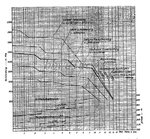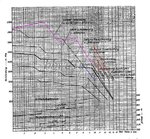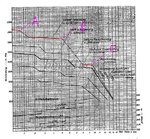TempestMKV
Airman
Focke-Wulf Ta 152-H1 Specifications:
Crew: One
Powerplant: Junkers Jumo 213E-1 12-cylinder, liquid-cooled engine rated at 1,750hp at take-off ( 2,050hp with MW 50 ) and 1,320hp at 32,800ft. (1,740hp with GM 1)Armament: 1 x 30mm Mk108 cannon mounted in the engine with 90 rounds, 2 x 20mm MG151/20 cannon mounted in the wign roots with 175 rpg.
Gunsight: Revi 16b reflector sight
Max. Speed: 332 mph @ sea level (350 mph with MW 50), 465 mph @ 29,530 feet (with MW 50), 472mph @ 41,010 feet (with GM 1)
Cruising Speed: 311 mph cruising speed at 22,965ft.
Range: 755 miles to 1,250 miles depending on speed and external tankage
Fuel Capacity - internal 260.6 gallons external: 158.5 gallons
Climb - initial 3445 fpm with MW 50 injection Time to Altitude: ?
Ceiling: 48,550ft. with GM 1 injection
Dimensions - wingspan: 47 feet 4.5 inches length: 35 feet 1.66 inches height: 11 feet 0.25 inches wing area: 250.8 square feet
Weights: 8,642 lbs empty, 10,472 lbs operational, 11,502 lbs max.
Operational Wingloading: 41.75 lbs/square foot
Number deployed: exact figure unknown but 20 pre-production H0's and 34 production H1's seem to be a generous estimate.
At 10000 meters, ie 33000feet, Ta152H1(with GM1) engine output should be around 1740 HP, max speed should be about 470-475m/h.
On the other hand, P47M R2800-57 output @ 10000m/33000feet is nearly 2800HP while maxspeed is 473m/h.
Anyone can explain how could Ta152 achieve same max speed with 1000HP smaller than P47M? Martian technology?
REPUBLIC AVIATION
Corporation Report No. ES-300
Farmingdale, L. I., New York Model AP-16a
October 14, 1944
Model Specification for
Republic Model ?AP-16a
Fighter Offensive
Air Corps Type Designation P-47M
Performance (With Design Useful Load)
(1). Guaranteed Performance
(a) High Speed at 38,750 ft. (Critical Altitude) with 2100 BHP 462 MPH
(b) High Speed at 15,000 ft. with 2100 BHP 383 MPH
(c) High Speed at 5,000 ft. with 2100 BHP 350 MPH
(d) High Speed at 42,000 ft. (Critical Altitude) with 1700 BHP 441 MPH
(e) Operating Speed at 32,000 ft. (Design Alt.)
with 1270 BHP (75% Normal Rated Power 91% Rated RPM) 360 MPH
(f) Endurance at Operating Speed with normal fuel load (205 gals.) 1.48 hrs.
(g) Time to Climb to 15,000 ft. 5.7 min.
(h) Take-Off over a 50 ft. obstacle within 2,200 ft.
(i) Landing over a 50 ft. obstacle, within 2,150 ft.
(j) Landing Speed with Flaps retracted 118 MPH
(k) Landing Speed with Flaps extended 99 MPH
(l) Cruising Speed at 20,000 ft., 820 BHP at 1800 RPM 246 MPH
(m) Range at Cruising Speed with 205 gals. of fuel 785 miles
(2). Additional Performance
(a) High Speed at 32,000 ft. (Critical Altitude) with 2800 BHP (W.E.P.) 473 MPH
(b) High Speed at 15,000 ft. with 2800 BHP 418 MPH
(c) High Speed at 5,000 ft. with 2800 BHP 384 MPH
(d) Time to Climb to 15,000 ft. with 2800 BHP 4.2 min.
(e) Take-Off over a 50 ft. obstacle, at 2800 BHP within 1,800 ft
Furthermore, at 30000 feet/ 9000m:
P47M max. speed 469km/h 2800HP
Ta152 max. speed 465km/h 1400HP- with MW50, without GM1
2800HP vs 1400HP, same speed. Why?



